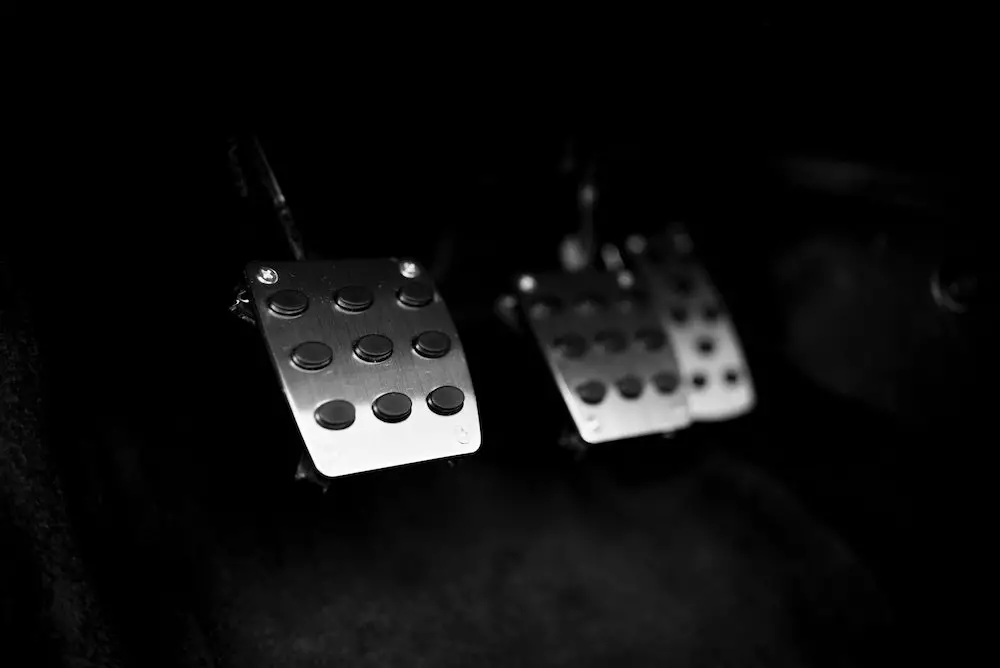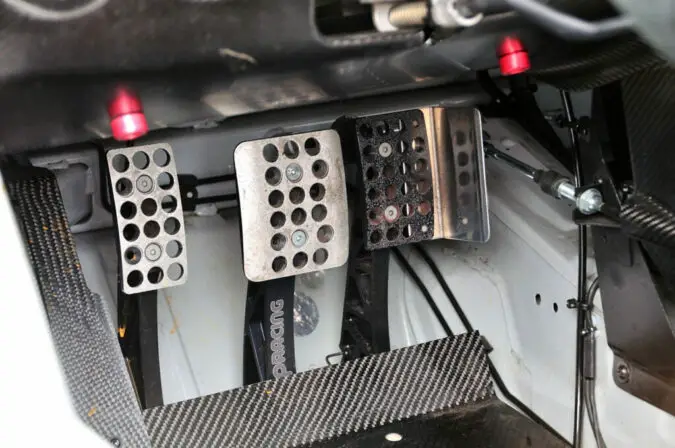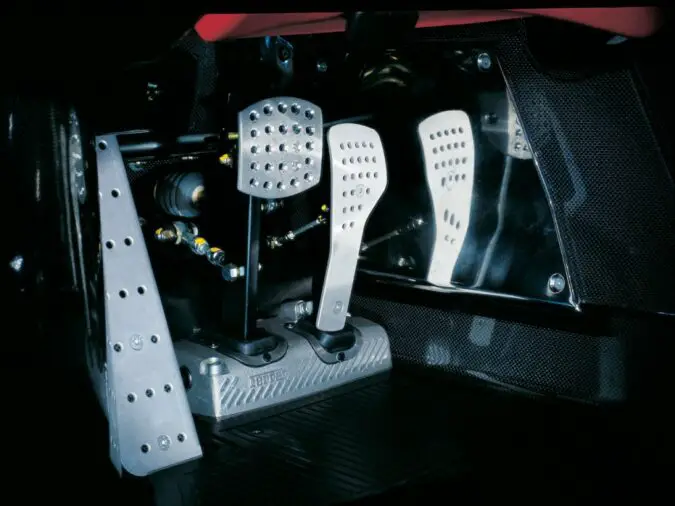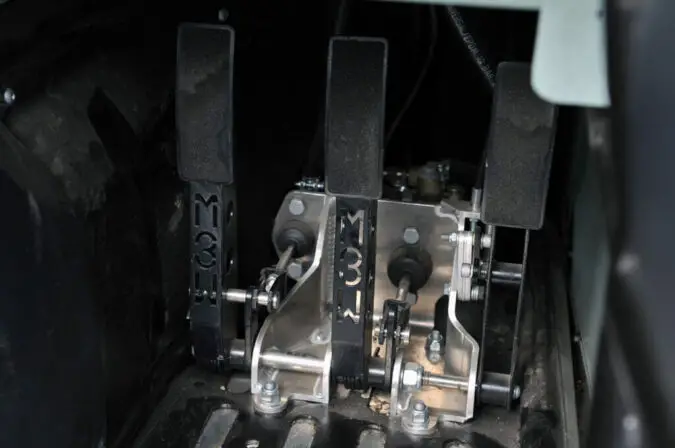Have you ever wondered what is the procedure for bleeding a clutch master cylinder? Well, if this is the case and you find yourself in this situation, then you are at the right place because there will be quite a bit to cover on this topic and we are going to learn everything you need to know about this topic.
- Clutch Master Cylinder
- Location
- Slave Cylinder vs Master
- Fluid Type
- Bleeding Procedure
- Master Cylinder Symptoms
- Diagnosing
- Replacing
- Cost
- Conclusion
- F.A.Q
Doing your own maintenance on a vehicle is really important. And frankly, this is something that you should never be afraid of doing. We strongly encourage people to work on their vehicles because of mainly two reasons. The first reason is that you learn how to do new stuff and maintain a vehicle and you improve your skills.
And the second pro of working on your own car is that you will save a ton of money in the long run. During 10-year ownership of a vehicle, you can save thousands of dollars on maintenance. And that is a lot of money that can be spent on other more fulfilling things like going out and meeting new people. This is why we are going to help you out.
First, we are going to learn what is a clutch master cylinder and why it is so important. Then we will compare the slave cylinder vs master cylinder and then we will discuss the type of fluid these components use. Also, we will learn more about bleeding a clutch master cylinder. Then, we will cover more on the symptoms of a bad clutch master cylinder and how you can diagnose it. So, if you want to learn more, follow along.
What Is A Clutch Master Cylinder
Now before we start diving into the topic of bleeding a clutch master cylinder, let’s first take a look at what a clutch master cylinder is and learn more about its purpose.
Why do we think that this is necessary? Well, mainly because this component operation is really not covered well and people are not quite familiar with it. So, if you want to learn, follow along. Or else, you can jump to the topic where we learn more about bleeding a clutch master cylinder.
So, what is a clutch master cylinder? Well, a clutch master cylinder is a small master cylinder that is dedicated to vehicles that use manual transmissions. You will not find one of these master cylinders in an automatic vehicle. But what this component does?
Well, the clutch master cylinder is basically a master cylinder. Just like the one that is found in the braking system. A simple component that aids the clutch’s operation. It makes using the clutch very easy since you don’t have to apply a lot of force to disengage the clutch.
Inside this component, there is a small piston that moves forward when you press the pedal and a spring that returns it to its original position.
What is worth noting is that this component works in the same manner as the brake system of your car. It uses fluid to work and create pressure in order so the clutch to be disengaged from the flywheel.
More about the type of fluid that this system works, we are going to elaborate on later in the article before we start discussing more on bleeding a clutch master cylinder. Now let’s take a look at the location of this component.
Clutch Master Cylinder Location
Now let’s take a look more at the location of the clutch master cylinder before we dive into the topic of bleeding a clutch master cylinder. Where is this component located on the vehicle?
Well, as we noted previously, the clutch master cylinder is aiding the clutch work and makes shifting gears really smooth. Since it eases the press of the clutch pedal.
So, similar to the brake master cylinder that is located on the firewall. The clutch master cylinder is also located on the firewall.
Basically, the clutch master cylinder position is mirroring the position of the clutch pedal inside of the vehicle.
When you open up the hood if you look in the far right corner of the engine bay. You will first notice the brake master cylinder and the brake booster. Next to the brake booster on the right side should be the clutch master cylinder.
So, locating this component shouldn’t be a big of a deal if you are asking me. Still, you might want to look online for some images of the clutch master cylinder location and learn where this component is located more precisely in your application.
A lot of carmakers have a strange layout when it comes to installing components in their cars. So, the layout can differ from application to application, this is why you should do your own research first before you dive into flushing the fluid and bleeding the clutch master cylinder. But what about bleeding a clutch master cylinder? More on that, we are going to cover it in a bit.
Slave Cylinder VS Master Cylinder
Another topic that we would like to cover before we dive into bleeding a clutch master cylinder is the slave cylinder vs master cylinder. What is the difference between the two components?
Both of these components are a part of the clutch system. The master cylinder is the one that when you press on the clutch pedal is pushing the fluid inside of the line and into the slave cylinder.
Then this fluid is pushing a piston that is installed inside of the slave cylinder. So, when the piston is moving it basically actuates the clutch fork.
The clutch fork then moves backward and this action disengages the clutch. So, we can see that in order for the clutch system to work well, you need to have both master and slave cylinders.
When it comes to their location, as you probably know since we explained already. The master cylinder is mounted on the firewall of the vehicle. Next to the brake master cylinder.
While the slave cylinder is mounted on the transmission. They are both connected with a line through which the fluid is traveling to deliver the pressure. But what type of fluid does the clutch master cylinder use? Well, more about that, we are going to explain in the following chapter and after that, we will dive into the bleeding of a clutch master cylinder and cover how it is done.
What Type Of Fluid Does The Clutch Master Cylinder Uses
Now before we dive into bleeding a clutch master cylinder and how it is done. Let’s first take a look at what type of fluid does this clutch master cylinder use? Is this a special fluid?
Well, actually no. This is the same fluid that you use for your brakes. It is a hydraulic fluid intended for brake use.
Also, this fluid is known as DOT. The most common types of fluid are DOT 3, DOT 4, and DOT 5.1. There is also DOT 5, but what is worth noting is that this fluid is not interchangeable with the first three types that we mentioned previously.
So, pay attention closely to what type of fluid your vehicle is using and make sure that you don’t confuse the types.
This is quite an essential piece of information because when mixed they don’t work well and you will have a big problem engaging the clutch pedal. DOT 3, 4, and 5.1 are glycol ether based. While the DOT 5 is silicon-based. Some newer vehicles are using DOT 5 and this is why you should pay close attention and not mix the DOT 5 with the other types of fluid.
We would also advise you to stick with the same type of fluid and not mix all different types of DOT. But the DOT 5 is the one that is most problematic. Now let’s move into bleeding a clutch master cylinder and learn how this procedure is done the right way.
Bleeding A Clutch Master Cylinder
Now let’s get to the topic of bleeding a clutch master cylinder and learn how this procedure is done to a car. Is this something complex or rather easy? Let’s elaborate on it in detail.
When it comes to bleeding a clutch master cylinder. The first thing you would want to do is to remove the fluid located inside the reservoir for the clutch master cylinder. For this, you will need a plastic syringe.
Once you removed the old fluid, just top off the fluid with new fluid. But we are not done yet. The next thing you would want to do is to get under the car.
Once you are under the car, you can notice the master cylinder on the side of the transmission. This master cylinder has a 10mm bleeder nut.
Loosen up the nut and tell the person inside of the vehicle to press the clutch pedal. There should be dirty fluid squirting from the bleeder nut.
Then as you bleed the slave cylinder and you are clearing the old brake fluid, just top off the brake fluid master cylinder reservoir until clean brake fluid squirts from the slave cylinder.
Once you did this, you are done. If you still feel like the clutch pedal isn’t working well once you bled the system. You will need to adjust a small nut on the clutch pedal. In the video that we attached, you can see how the procedure is done and how to adjust the nut to make sure that the clutch pedal is working perfectly well.
Overall, that’s all when it comes to bleeding a clutch master cylinder. It is a simple process. Now let’s move to other topics.
Master Clutch Cylinder Symptoms
So, we learned a lot about the bleeding of a clutch master cylinder and we covered how this procedure is done on a car.
Now let’s move on to other topics. More precisely on the topic of clutch master cylinder symptoms and learn more about the symptoms that are an indication that you have a problem with your clutch master cylinder. So, if you want to learn something new and interesting, follow along.
1. Low Fluid Level
The first symptom in our list of symptoms of a bad master cylinder that we will cover since we learned about bleeding a clutch master cylinder is the low fluid level. Why this could be considered a symptom of a bad clutch master cylinder?
Well, this is the case because the clutch master cylinder as well as the slave master cylinder can develop leaks.
And when you have leaks, you will also have a low brake fluid level inside of the master cylinder canister. So, if you are losing fluid, it means that the hydraulic system is breathing somewhere and you have a problem with the master cylinder. This problem can be patched, or if the master cylinder itself is bad and has bad seals, it will have to be replaced and then you need to learn about bleeding a clutch master cylinder.
2. Spongy Clutch Pedal
The second symptom that we will cover. Since we already learned about bleeding a clutch master cylinder is the situation with the spongy pedal feel. So, why is this the case? Why the clutch pedal feels spongy?
Well, this is the case in most situations because of the air inside of the system. If you have air inside of the master and slave cylinder or in the line that connects them, you can expect that there will also be a spongy clutch pedal.
A clutch pedal should be this way. But if the problem is abnormal, then you definitely have air in the system and the system needs to be re-bled. So, learning about bleeding a clutch master cylinder is essential in this aspect.
3. Stiff Clutch Pedal
A more serious problem is when the clutch is feeling stiff. So, why is this the case, why the clutch is feeling stiff?
Well, this is often the case because of a faulty master or slave cylinder. The master or slave cylinder simply cannot create enough hydraulic pressure and you will have this symptom.
So, in these situations, it is useful to check the master clutch cylinder and troubleshoot the problem. It might be the fluid that is dirty and preventing the flow in the system.
So, learn first about bleeding a clutch master cylinder. If this doesn’t help, the master or the slave cylinder will have to be replaced in most cases. Or possibly there is some mechanical problem such as a bad throwout bearing or something inside of the clutch assembly.
4. Clutch Pedal Goes To Floor
The next symptom of a bad master brake cylinder that we are going to cover is the sinking clutch pedal.
The pedal just sinks and does not want to return back. Why is this the case? Well, inside the master cylinder as well as in the slave cylinder there is a spring that helps the piston to return back to its original position.
And if this spring fails, you will not be able to get your clutch pedal up. Also, if there is a serious leak in the system, there could be a similar issue.
So, in both cases, the system needs to be thoroughly checked. First, check if there is enough fluid in the reservoir. If there isn’t, just top it off with fluid and also inspect for possible leaks.
If all the system seems okay and does not have leaks, then you definitely want to learn more about bleeding a clutch master cylinder and changing the fluid. And if this doesn’t help, then you probably have a problem with the master or slave cylinders.
5. Clutch Does Not Disengage When You Press The Pedal
Another problem that can be caused by a bad master clutch cylinder is the situation when the clutch does not disengage once you press the clutch pedal.
So, the car is still in gear and you cannot go a gear up or gear down. This will be a problem because you will be stuck in one gear.
So, if you are stuck in 3rd gear, you are left driving like this till you sort out the problem. But why is this the case?
Well, this can be the case because the master cylinder has a leak or very low fluid, so it cannot build enough pressure to move the fork that pushes the throwout bearing to disengage the clutch.
In these situations, it is very difficult to use the gear shifter because no matter how hard you try and apply force, it will not go into another gear. When you have an issue like this, it is important to inspect the master clutch cylinder and see if you have any leaks or issues.
If the system is leaking, bleeding a clutch master cylinder is essential. But more on how to diagnose the problem, we are going to cover next.
How To Diagnose A Bad Clutch Master Cylinder
So, we learned about bleeding a clutch master cylinder, now let’s take a look at how to diagnose a bad clutch master cylinder. How you can do that?
Usually, when the clutch master cylinder sinking slowly and also it is losing fluid, you will notice how there is low fluid in the reservoir. So, you will need to top it off.
But to be sure that the master cylinder is leaking and not the slave, you will have to inspect the clutch pedal of your car.
Usually, on the other side where this master cylinder is bolted on, there will be drippings of brake fluid. Remove the dust cover and you will notice how the connection is soaked in fluid.
How To Replace A Clutch Master Cylinder
So, you diagnosed a bad clutch master cylinder. Now, what is your option? Well, the only option for you, in this case, will be to replace it with a new one.
You will have to purchase a new component and then swap it. Just remember when we covered how bleeding a clutch master cylinder is done. You will also have to bleed the system again with fresh brake fluid. More on the replacement process can check in the video above.
Cost To Replace Clutch Master Cylinder
We learned about bleeding a clutch master cylinder, now let’s take a look at the cost to replace this component. How much money can you expect to pay to replace it?
Well, it is not as expensive as many people would think. The part alone is between $200 and $350. The labor will also cost you anywhere in the range of $150 to $250. If you do the job by yourself, you will save on labor costs.
Conclusion
In this article, we covered quite a bit when it comes to clutch master cylinders. First, we learned what this component is all about and how it works in practice. Then we covered the process of bleeding a clutch master cylinder and learned how it is done.
After that, we covered the main symptoms of a bad clutch master cylinder and how you can diagnose and replace it.
F.A.Q
Now let’s answer some frequently asked questions.
How A Clutch Works
The clutch mechanism is complex. There are two types of mechanisms. A hydraulic clutch and also a cable clutch. The hydraulic one is rather complex because it uses a master cylinder as well as a slave cylinder to engage and disengage the clutch plate.
What Does The Clutch Do
The clutch simply creates a bond between the transmission and the flywheel of the engine. This is a big disc with friction material that is really grippy and helps engage and disengage these two components.
Where Is The Clutch Fluid Located
The clutch fluid is located immediately next to the brake master cylinder. These two master cylinders are located next to one another on the firewall where the driver pedals are located.
What Is A Slave Cylinder
The slave cylinder is the counterpart to the master cylinder. This component basically reacts to the work of the master cylinder and as its name implies, it follows the orders of the master cylinder.
Can You Use Brake Fluid For Clutch Fluid
Yes, you can use brake fluid for the clutch master cylinder with no problem. Just make sure that you don’t mix DOT 3, 4, or 5.1 with the DOT 5 fluid since the DOT is silicone based, while the others are glycol-based solutions.
How To Bleed A Hydraulic Clutch
In order to bleed the clutch, you will need to remove all fluid from the reservoir and top off the fluid with fresh fluid. Then remove the washer bolt from the slave cylinder and give it a few presses on the clutch pedal. Dirty fluid should be released at first. Then you will have to top off the fluid and do the same thing again and again till clean brake fluid starts to come from the slave cylinder. Once you are done, tighten up the bolt and you are good to go.




